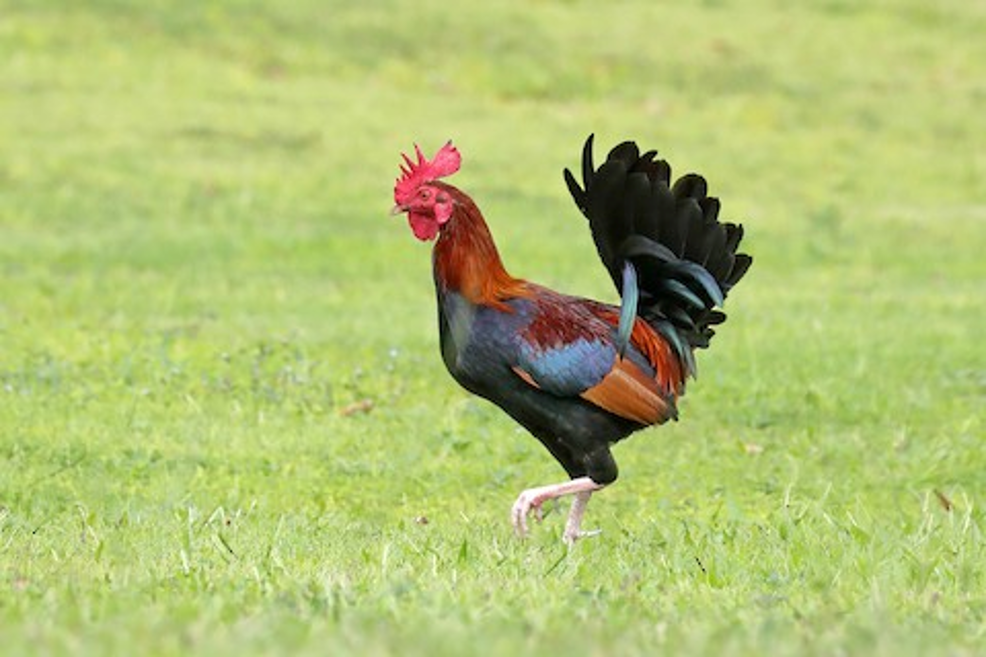 |
| A male red jungle fowl and chicken hybrid. Has the plumage of a red jungle fowl but in a rooster shape. |
The red jungle fowl and domesticated chicken share a common ancestor, but recently there has been a trend in the red jungle fowl's DNA. The fowl and chickens have been interbreeding with the jungle fowl in Southeast Asia. The domesticated chickens and jungle fowl were researched to determine if the cross was harmful to the populations. This interbreeding has resulted the modern fowls having 20-50% of the genomes that originated from domesticated chickens. Over the last century, many domesticated species have been interbreeding with the wild populations. It was expected that the two populations would have a higher genetic diversity, but the jungle fowl have lost their genetic diversity. The measure of a population's genetic diversity, heterozygosity, is only 10% of what it was a century ago which could be a result of the domestic chickens having such low genetic diversity.
Most of the traits that chickens have been bred for are for human uses, which would decrease the survival of the red jungle fowls. The genetic change of the fowl is negative for both domestic chickens and fowls. Fowls have a lower chance of survival as their survival traits are replaced for the traits that were selected for in chickens. As the red jungle fowl becomes more like chickens, humans cannot use the genetics of the fowl to help make domestic chickens more resilient to disease.
Although the red jungle fowl and domesticated chickens appear similar, it is important to reduce the interbreeding between the two. In my opinion, the managing of the jungle fowl populations is a great initiative. Humans need the domestic chickens as a source of food, and the wild red jungle fowl are vital in improving the chickens resistance. The separation will also be beneficial to the red jungle fowl by keeping the wild-type traits as the traits with the highest survivability in the wild.
Sources:












